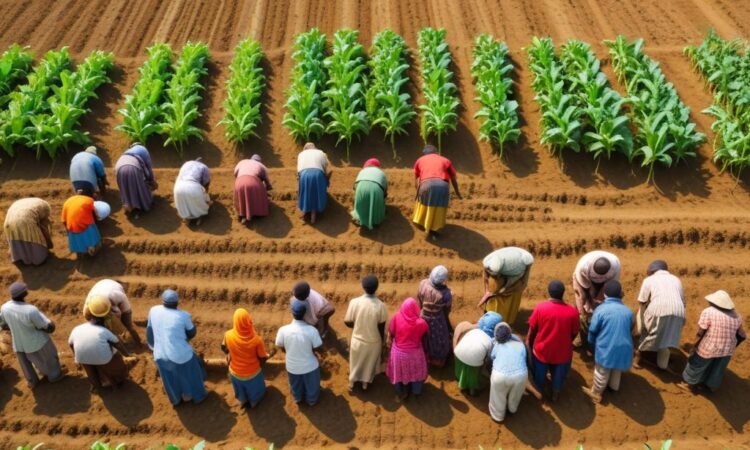The Global Food Crisis: A Multifaceted Challenge
Okay, let’s talk about something seriously important: the global food crisis. It’s not just about empty shelves at the supermarket; it’s a huge, complicated problem affecting millions of people worldwide. And it’s not a single cause thing – it’s like a tangled mess of issues all impacting each other.
Climate Change: A Recipe for Disaster
First up, climate change. Think extreme weather – droughts that wipe out entire harvests, floods that ruin farmland, heatwaves that scorch crops. It’s not just about less food being produced; it’s also about unpredictable harvests, making it harder to plan and distribute food effectively. Farmers are struggling, and that impacts everyone down the line.
We’re seeing more erratic weather patterns, longer and more intense heatwaves, and shifting rainfall patterns. This makes farming incredibly difficult, leading to lower yields and higher food prices. It’s a vicious cycle – less food means higher prices, which particularly hurts vulnerable populations.
Conflict: Disrupting Food Supplies
Next, let’s talk conflict. Wars and political instability directly disrupt food production and distribution. Farming becomes impossible in war zones, supply routes are cut off, and resources are diverted to military efforts instead of food production. This often leads to famine and widespread food insecurity in affected regions. Even if a region isn’t directly in a conflict zone, the ripple effects can still impact food prices and availability globally.
Economic Instability: The Price of Hunger
Economic instability plays a huge role, too. When economies tank, people lose jobs and their ability to afford food. Inflation makes food prices skyrocket, leaving many unable to feed themselves or their families. This is especially true in developing countries that rely heavily on food imports. A global economic downturn can quickly trigger a food crisis, even in places that usually have stable food supplies.
Supply Chain Snags: A Global Bottleneck
And then there’s the issue of supply chains. These complex networks – from farm to table – are easily disrupted. Pandemics, like the recent COVID-19 outbreak, highlighted just how vulnerable our food systems are. Shipping delays, port congestion, and labor shortages can all contribute to food shortages and price increases. This problem is amplified by things like rising fuel costs which add to transportation expenses, making food more expensive.
Potential Solutions: A Collaborative Effort
So, what can we do? This is a massive challenge, but it’s not insurmountable. We need a multi-pronged approach that tackles all these interconnected problems.
Investing in climate-resilient agriculture is crucial. This means developing crops that can withstand extreme weather conditions, improving irrigation systems, and promoting sustainable farming practices. We also need to strengthen global cooperation to address conflict and promote peace, because stable environments are essential for food security.
Economic policies that support farmers and protect vulnerable populations are essential. This might include things like price controls, subsidies for farmers, and social safety nets to help those struggling to afford food. We must also focus on improving global supply chains to make them more resilient and less susceptible to disruptions. This involves things like diversifying supply routes, improving infrastructure, and promoting fair trade practices.
Finally, we need to promote sustainable consumption patterns. Reducing food waste, choosing sustainable and locally sourced foods, and supporting sustainable farming practices are all small steps we can take to help address this global problem.
The global food crisis isn’t just a distant problem; it’s a threat to global stability and human well-being. It requires a global response, and that involves all of us – governments, organizations, businesses, and individuals – working together to find solutions.
It’s a complicated issue, but by acknowledging the multiple factors at play and working collaboratively, we can start building a more resilient and sustainable food system that ensures food security for everyone.

